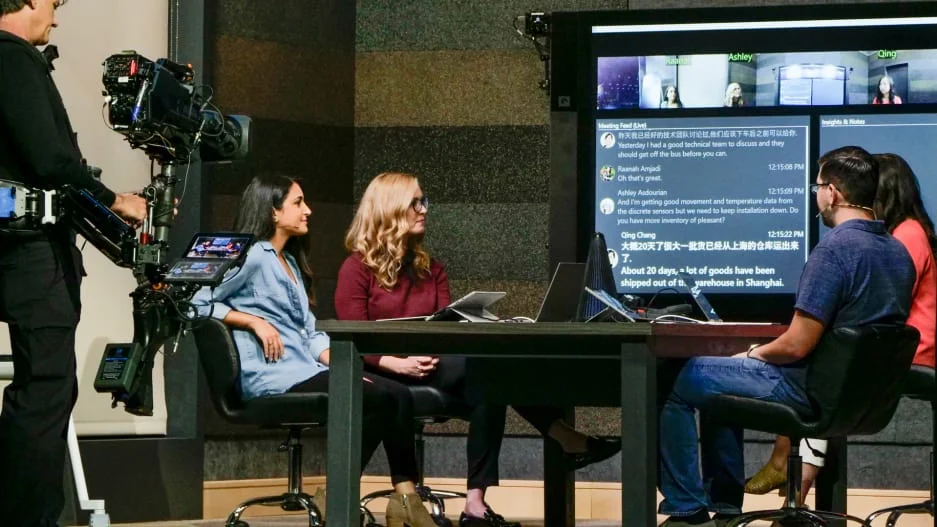Two meeting participants–one of them virtual–use HoloLens to examine a 3D blueprint of a building. [Photo: Mark Sullivan]
Two things are said on nearly every video conference meeting: “Can you see my screen?” and “Can you move closer to the microphone?”
Tele-meetings–especially ones with more than five people–are clunky at best and headache-inducing at worst. In a typical scenario, 10 people are gathered in a room in the home office and seven or eight souls traveling or working at home have to call in, or Skype in from their laptops. Some of them keep the mic on mute and shut off the camera, making them a purely passive participant. Since the remote people often can’t see the faces of the other participants, they have no idea when it might be their turn to speak. When they break in to the discussion, it sounds like this: “Hi hey hi hey hello? Hello? It’s Ed in Phoenix, can you hear me?” And they can’t see the body language of the people on the other end, so they have no idea if their comments are eliciting nods, shrugs, or blank stares.
It’s a miserable experience, one that many companies have tried to solve over the years to no avail. Now, Microsoft thinks it may have the answer—with a new technology that enhances collaboration, rather than put up barriers to it.
Microsoft demonstrated its new meeting technology in a mocked-up conference room set during one of the keynotes at its Ignite conference Monday in Orlando. (Until a last-minute change, the demo was initially supposed to take place during CEO Satya Nadella’s keynote.) I was allowed in to one of Microsoft’s labs to watch one of the rehearsals for the presentation.
Some of the technology I saw is now generally available, some of it will be released later this year, and some of it is still very much in the experimental stage. The meeting technology pulls in the work of many of Microsoft’s groups, including Office 365, Teams, Bing, Cognitive Services (AI), and even HoloLens.


